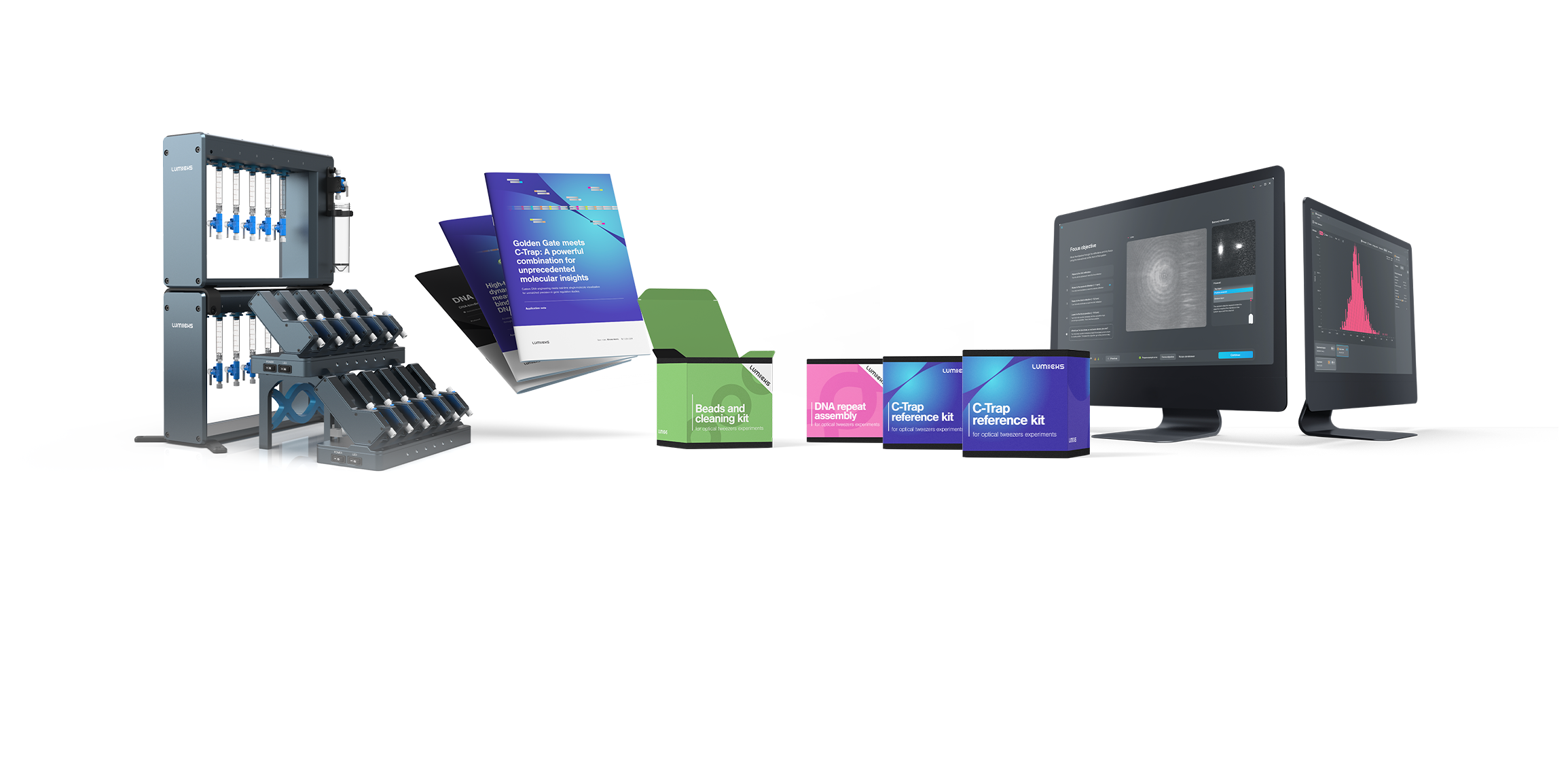C-Trap

Part of:
C-Trap Accelerator Suite
Supercharge your C-Trap into a faster, easier, more reproducible powerhouse. C-Trap Accelerator Suite boosts the capabilities of the instrument you already own, letting you capture publishable single-molecule data in half the time with rock-solid reproducibility.

A typical experiment
Take a look inside
Highly precise & stable sample manipulation
Multicolor fluorescence imaging
Laminar flow microfluidics

High throughput & hands-off

Load your samples & assemble your assay
Seamlessly gather reagents and assemble your constructs with the laminar flowcell and automation features. Once completed, you’re ready to measure.

Perform and automate your experiments

Grab your data and clean up
Your new data acquisition and analysis experiences
Curious about our data analysis?
Discover all the details
Beyond the product

Join the community
Ready-made reagent kits and tailored sample preparation services
- Ready-made reagents
- Kits
- Tailored services
- Product accessories
- ...and more!


Your success is our success
Begin your LUMICKS journey
Demonstrating value
Grant & tender support
Throughout our history we have supported multiple successful grants across a broad spectrum of funding and users involved. Our application scientists are experienced in highlighting the unique value of Dynamic Single-molecule and its solutions, and are able to collect proof-of-concept data to strengthen your grant application.
To this end, we have a dedicated grant expeditor brochure that indicates all the possibilities and provides a clear outline of the type of processes we can help you go through. Please contact us to gain more information!
Let’s get in touch
Filter DSM shows 3 items
There is a hidden collection to add multiple authors to this publication.
This section is hidden when emtpy.
To keep everything visible here, that is being done outside the webflow designer from within Slater.
Migrasome formation is initiated preferentially in tubular junctions by membrane tension
E. coli RecB Nuclease Domain Regulates RecBCD Helicase Activity but not Single Stranded DNA Translocase Activity
Rapid Long-distance Migration of RPA on Single Stranded DNA Occurs Through Intersegmental Transfer Utilizing Multivalent Interactions
Filter DSM and show 4 latest
This shows the most recent card of each resource type filtered on Business Unit
Webinar, Scientific update, Whitepaper, Application note, Brochure.
We only show 4 and we have 6 types so the 2 older ones are hidden.
In design only 1 is shown, but the rest will be loaded when published.
C-Trap Accelerator Suite
Get an inside look at the new C-Trap Accelerater Suite and see how it can transform your experiments. Our product managers will walk you through the powerful new features, which are designed to make your C-Trap faster, easier to use, and more reproducible than ever.
Linking Mechanical Stability with in vivo Recombination: Single-molecule Research Reveals Bacterial Antibiotic Resistance
Golden Gate meets C-Trap: A powerful combination for unprecedented molecular insights
Precisely manipulating genetic material at the single molecule level is gaining importance across life sciences – and so do the tools that allow researchers to do exactly that. The C-Trap system combines single molecule fluorescence microscopy with optical tweezers to manipulate DNA, allowing researchers to directly observe and track molecular events as they occur. Designing and creating specific DNA constructs is crucial for maximizing the potential of single molecule studies. In this application note we introduce the powerful combination of cutting edge biochemistry and single-molecule visualization methods to increase throughput and maximize the results gained from each individual measurement.
C-Trap Product Brochure
AACR 2025


















































































